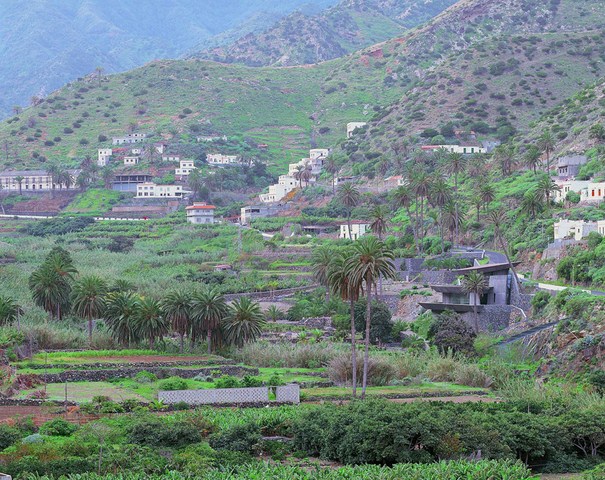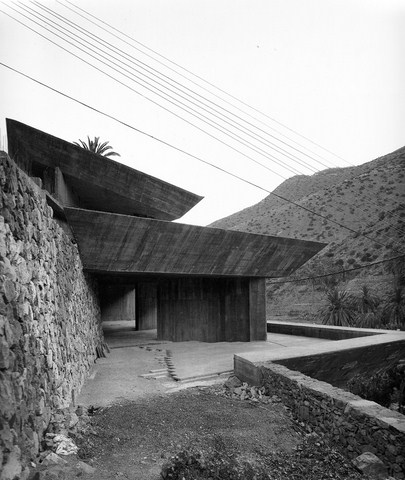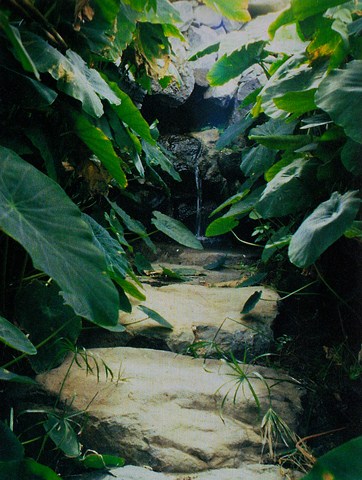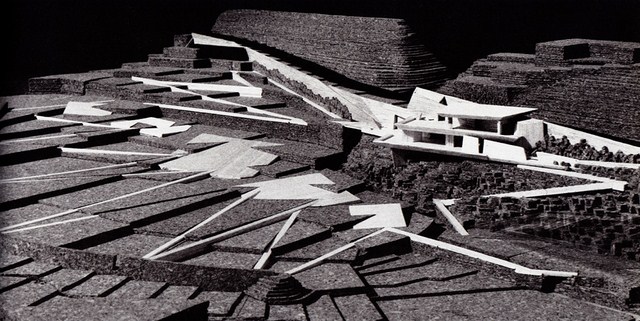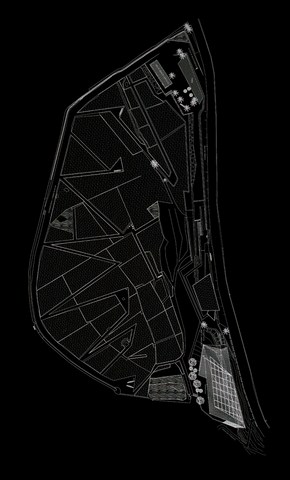This website uses cookies so that we can provide you with the best user experience possible. Cookie information is stored in your browser and performs functions such as recognising you when you return to our website and helping our team to understand which sections of the website you find most interesting and useful.
Botanical Garden El Descubrimiento de las Américas (Discovery of the Americas)
Technical data:
Architects: Fernando Menis, Felipe Artengo Rufino, José Maria Rodriguez Pastrana.
Location: Vallehermoso. La Gomera. Spain.
Use: Botanical Garden, Visitors Center.
Structure: Reinforced concrete.
Materials: Local stone, concrete.
Client: Excellency Government of La Gomera.
Status: Built (1999-2002).
Description: The Botanical Garden El Descubrimiento de las Américas is a 16.219 m² park located in Vallehermoso, on the island of La Gomera, in the Canary Islands, Spain. It is located between the Old Town and the Maritime Park, next to Vallehermoso cliff, in a green and rural environment with views over the farming lands, the palm trees and the greenery scattered across the valley underneath.
The Garden’s design was commissioned by the Cabildo de la Gomera at the beginning of the 90’ of the XX century and was named “El Descubrimiento de las Américas”, as a tribute to the intense historical relation of the island with the discovery of America. By exhibiting the native flora and vegetable species involved in the American-European exchanges, it aims to illustrate the historical importance of the Canary Islands on the road to America. After Columbus’s stop on the islands, it started the golden age of the archipelago as a scale when crossing the Atlantic. The current, which joins the African and American coasts, known as the North Atlantic Stream, became a large highway that shaped the Spanish Empire.
The botanical garden accommodates vegetal species from the five continents, emphasizing those specimens, which the discoverers of the New World could find. When America is discovered, the Pacific is also explored and the exchanges of flora increase globally. We could date the beginning of the globalization on that historical point. When the first Europeans came to the New World, the local native farmers were cultivating over hundreds of different comestibles plants, unknown at that time: potatoes, sunflowers, aubergines, avocados, different kinds of beans and pumpkins, sweet potatoes, peanuts, cashews, pineapples, papaya, guava, yams, manioc, vanilla, chili pepper, coffee, chocolate, and others. The impact was such that, according to current estimations, 60% of the harvests are originally from America. Besides, the park has got a greenhouse too, a shaded place that holds mostly orchids and other species from exotic places of the New World. The architect named it the Orquidiario.
The botanical garden also exhibits representative plants from the Canaries archipelago, taking a special care for the endemic plants from La Gomera. The use of these endemic plants allows the walker, submerged among species from the New World, to appreciate the value of the native flora and its important role on the exchanges between America and Europe. Therefore, to preserve the vegetal heritage was crucial, and the pedestrian walkways that generate different terracing, were drew up to respect the centenary palms of the place.
The large landscaped areas we can see today were carefully traced to give shelter to different kinds of Canaries pine trees, dragon trees, fern and heather, and some specimens from the Laurisilva woods. The entire ensemble has the power to take our fantasy in a time when this vegetation covered the entire island and life took place among these silent witnesses. Millions of years ago, this flora covered most of the Earth’s tropics, and part of it has been preserved in La Gomera, within an exuberant vegetal ecosystem characterized by high humidity, the absence of seasonal changes and a great diversity of botanical species.
Fernando Menis, who supervised the construction works, could work closely with the botanist David Bramwell, to turn the experience of a garden in a sensorial, cultural and historical tour, which at the same time contributes to the pedagogic and research mission of this centre. The garden was traced out following the random, open and free lines of the original place, which subsequently allowed different landscape itineraries and ways to visit it. In time, the artificial lines have disappeared under the nature load, have converged with it and so the original predictable geometrical plan has been growing sinuous and surprising, in a spectacular interplay with the already mature vegetation.
The pedestrian walkways, made with ramps, were designed with soft slopes that allow a relaxed walk for every person of all ages, including those with disabilities. These paths zigzag into the landscape, playing with landscaped areas, topography, with natural elements like water, greenery, discreet hills and meadows, always searching to surprise the visitor and seduce her senses with diverse experiences. In a daydream mood the visitor can mentally reconstruct the paradise that the island was once upon a time, a time when America was discovered and during the Renaissance.
The client also wanted the park to have an economic impact on Vallehermoso that is the most important town of La Gomera, to encourage locals and foreigners to visiting it. In this area the population had been heavily decreasing and tourism was low compared to other parts of the Canaries archipelago. This was the main reason for which the Garden was designed to include a building to host the visitor’s centre and a cafeteria. It is a two-floor structure, made of black concrete, like a lookout emerging discreetly in the natural landscape of the valley, and acting as a physical and decisive limit of the park with the urban fabric and the beach road. Its organic forms reminding large natural terraces become open balconies overlooking the garden and the bottom of the ravine, all the way down to the ocean you may guess in a distance.

 Español
Español

